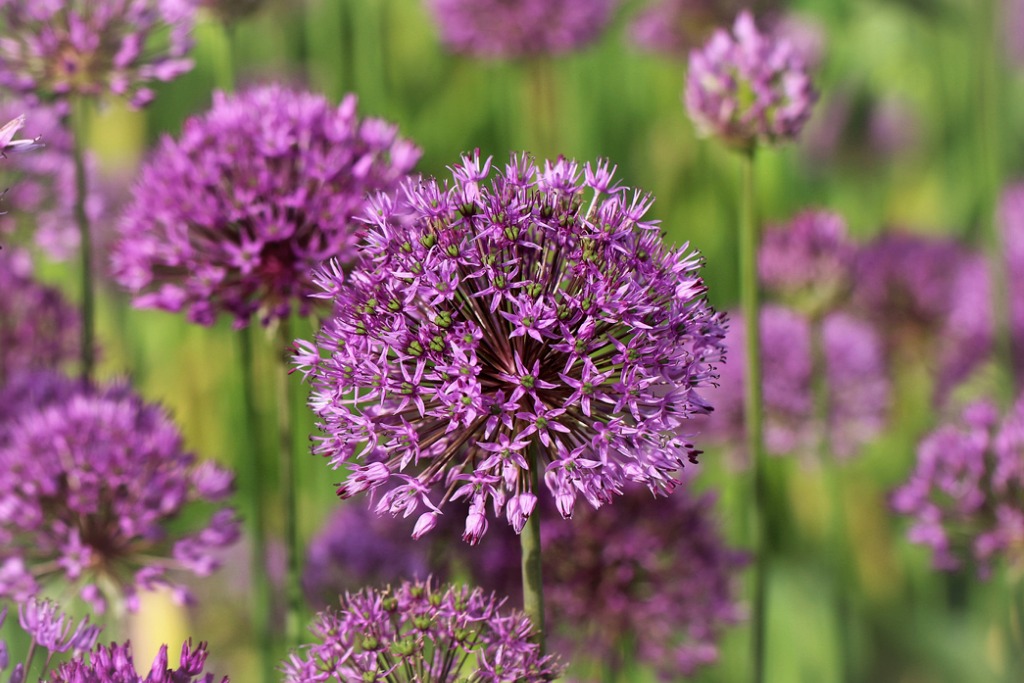Allium aflatunense
(Allium aflatunense)

Description
Allium aflatunense is a species of plant in the amaryllis family, native to Kazakhstan and Kyrgyzstan in Central Asia. It is commonly grown as a garden plant in other regions. Allium aflatunense is a 0.9 m (36 in) tall bulbous perennial plant with basal, straplike leaves, and hollow, slightly ribbed scapes (flower stems). The flower heads are dense, globular umbels, about 10 cm (4 in) across, made up of numerous star-shaped, purplish-pink flowers. It flowers in May and June, with seeds ripening in August. It is commonly sold as a bulb. Allium aflatunense is often confused with A. hollandicum. Allium aflatunense is generally hardy in USDA zones 4-8. The plant is suitable for use as a cut flower. While it prefers alkaline soil, it can tolerate poor soil conditions, as well as part shade (though it does best in full sun). Allium is a genus of monocotyledonous flowering plants that includes hundreds of species, including the cultivated onion, garlic, scallion, shallot, leek, and chives. The generic name Allium is the Latin word for garlic, and the type species for the genus is Allium sativum which means "cultivated garlic". Carl Linnaeus first described the genus Allium in 1753. Some sources refer to Greek ἀλέω (aleo, to avoid) by reason of the smell of garlic. Various Allium have been cultivated from the earliest times, and about a dozen species are economically important as crops, or garden vegetables, and an increasing number of species are important as ornamental plants. The decision to include a species in the genus Allium is taxonomically difficult, and species boundaries are unclear. Estimates of the number of species are as low as 260, and as high as 979. Allium species occur in temperate climates of the Northern Hemisphere, except for a few species occurring in Chile (such as A. juncifolium), Brazil (A. sellovianum), and tropical Africa (A. spathaceum). They vary in height between 5 cm and 150 cm. The flowers form an umbel at the top of a leafless stalk. The bulbs vary in size between species, from small (around 2-3 mm in diameter) to rather large (8-10 cm). Some species (such as Welsh onion A. fistulosum and leeks (A. ampeloprasum)) develop thickened leaf-bases rather than forming bulbs as such. Plants of the genus Allium produce chemical compounds, mostly derived from cysteine sulfoxides, that give them a characteristic onion or garlic taste and odor. Many are used as food plants, though not all members of the genus are equally flavorful.
Taxonomic tree:







